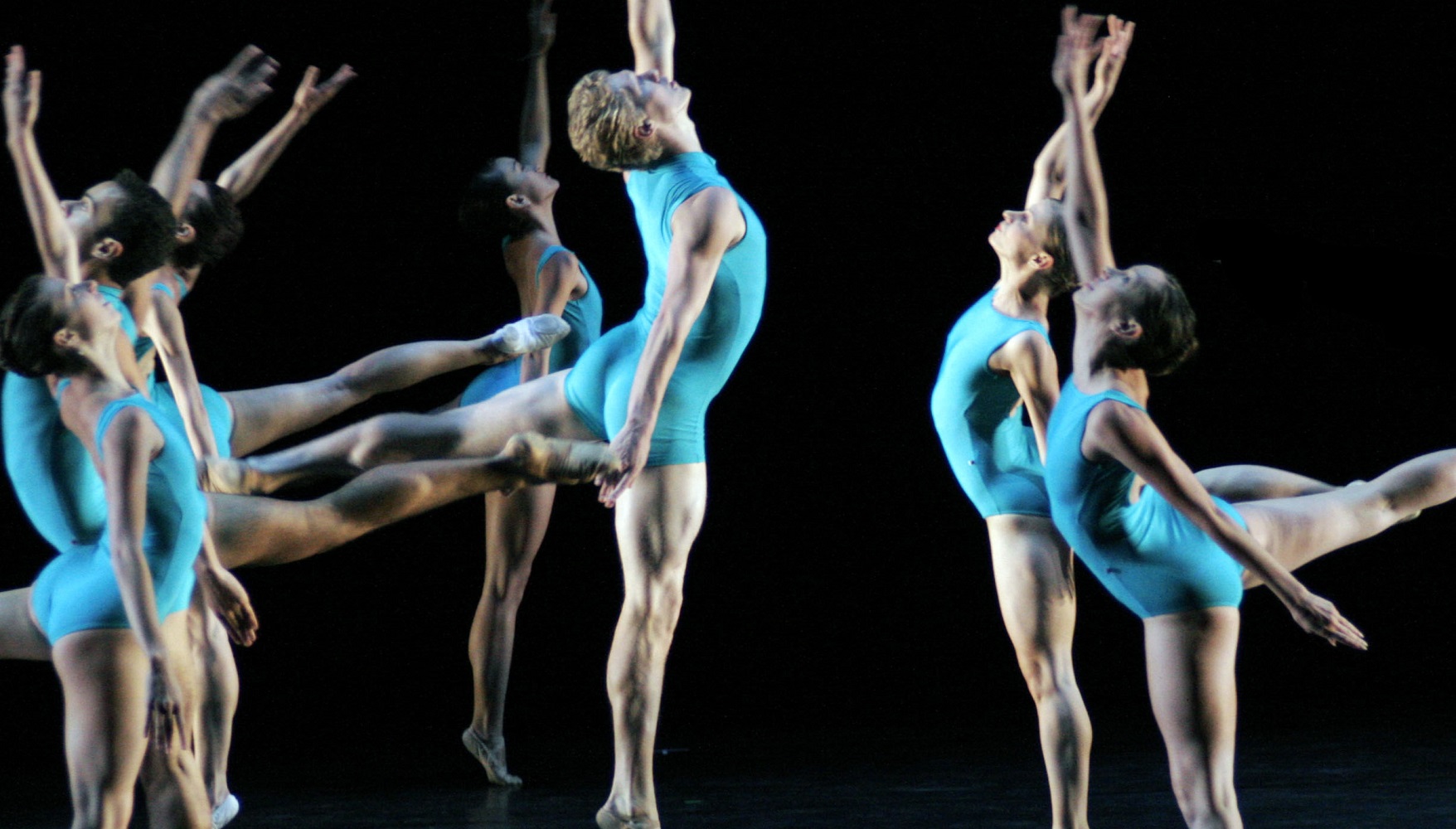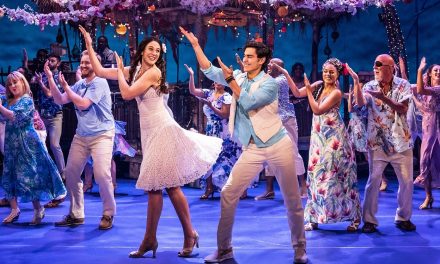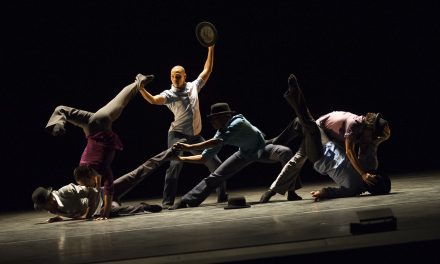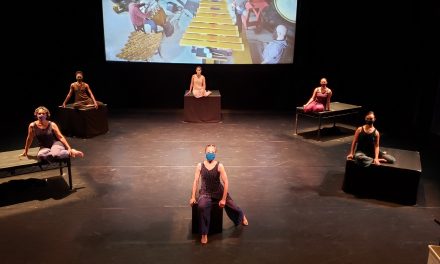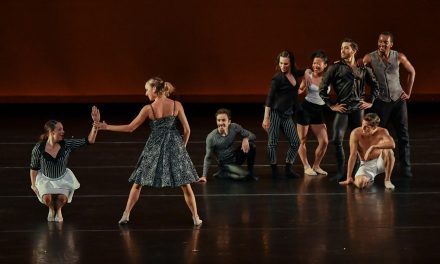Founded in 2002, the Raiford Rogers Modern Ballet performs annually at the Luckman Fine Arts Center Complex, located on the campus of California State University, Los Angeles. This year’s program included Rogers’ Still Life (2015), CHANEL (2001/1994), and the world premiere of Joshua Tree Symphony. Additionally, the program included an onstage performance of Igor Stravinsky’s Concerto in D for Strings by the Jacaranda Chamber Orchestra, led by conductor Mark Hilt.
Rogers’ choreography style showed elements like those of Merce Cunningham; the double duets breaking off into group sections along with an aura of detachment from the performers. Not to detract from Rogers’ strong talents, the choreographic structure for Still Life and Joshua Tree Symphony were far too visible and similar; they were almost predictable. His movement was deceptive, however. It appeared easy to accomplish, but, as a former dancer, I know how truly challenging the slow sustained movements are to perform. The dancer’s bare and basic technique skills were on full display.
The Santa Monica based Jacaranda Chamber Orchestra opened the program with Igor Stravinsky’s Concerto in D for Strings, which was composed here in Hollywood in 1946 in response to a commission from conductor Paul Sacher. It was in celebration of the twentieth anniversary of the Basler Kammerorchester. The piece is sometimes referred to the “Basler” Concerto. Choreographers Dore Hoyer (Hamburg State Opera), Jerome Robbins (New York City Ballet) and Werner Ulbrich (Stuttgart) have created works to this music. I am not a music critic, but I very much enjoyed this performance and it was a wonderful union of two artforms.
“Still Life” – Photo: A. Trelease
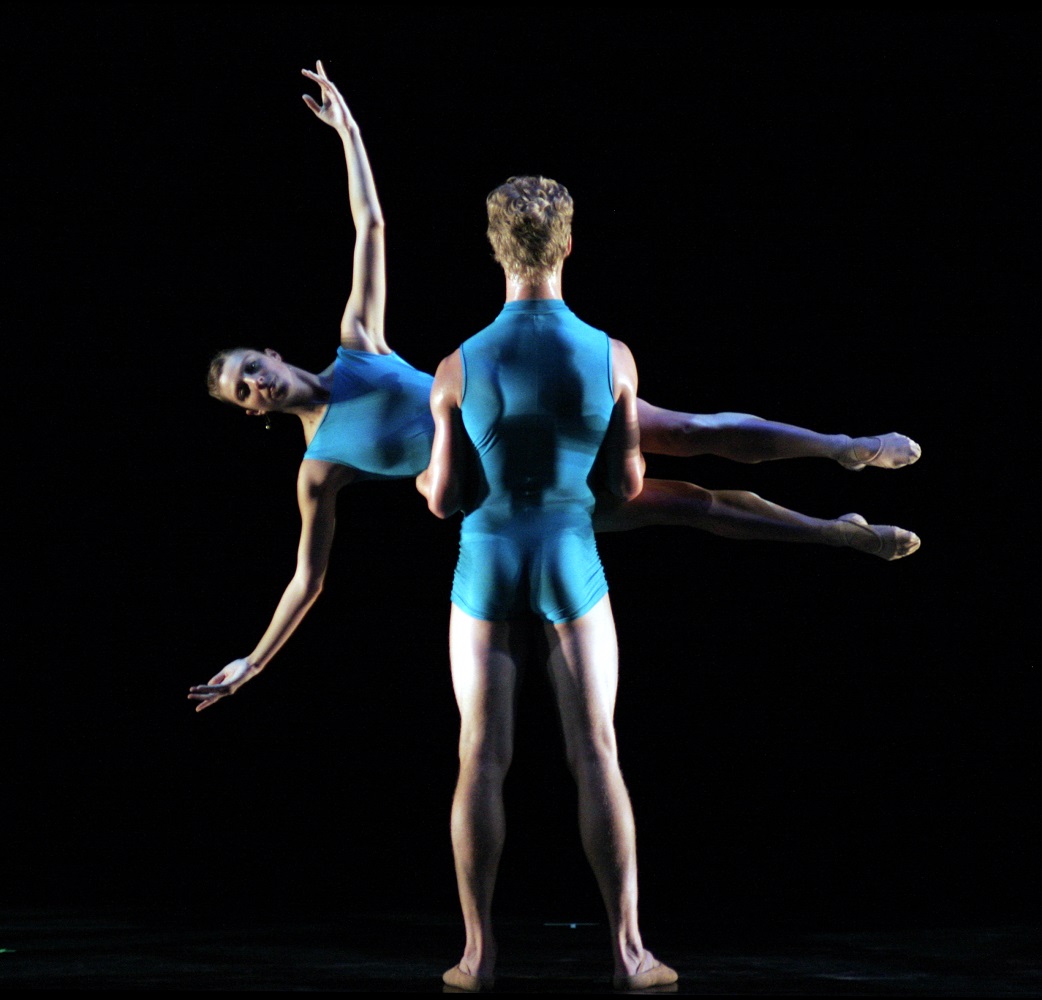
“Still Life” – Photo: A. Trelease
The dancers were uniformly dressed in simple, bright blue leotards for Still Life; performing before a slow changing, full backdrop projection of Ed Evans’ beautiful black and white photographs of wintery trees. The dance opens with six women performing similar solos that demonstrate this talented cast’s technical control. They are followed by five equally strong men and a solo by Mate Szentes. The dance is void of emotion or narrative, but filled with restraint that is released by sudden explosions of fast movements. These stop abruptly with a dancer, mainly Szentes, standing alone center stage. From there the action renews in a similar manner, always returning one’s focus to the lone figure standing still in a spotlight dead center. Several times the entire cast performed the same movements with individual timings. Sadly, when unison was required, they were often not in sync.
The music for Still Life by Czech composer Zbynek Mateju was performed live by the Jacaranda Chamber Orchestra, and it is powerful, harsh and, at times, explosive. Rogers moved his dancers with and against the music; the dancers often appearing to work separately from the music. Their timings were impeccable, however, as they always ended on a musical cue.
Raiford Rogers Modern Ballet in “Still Life” – Photo: A. Trelease
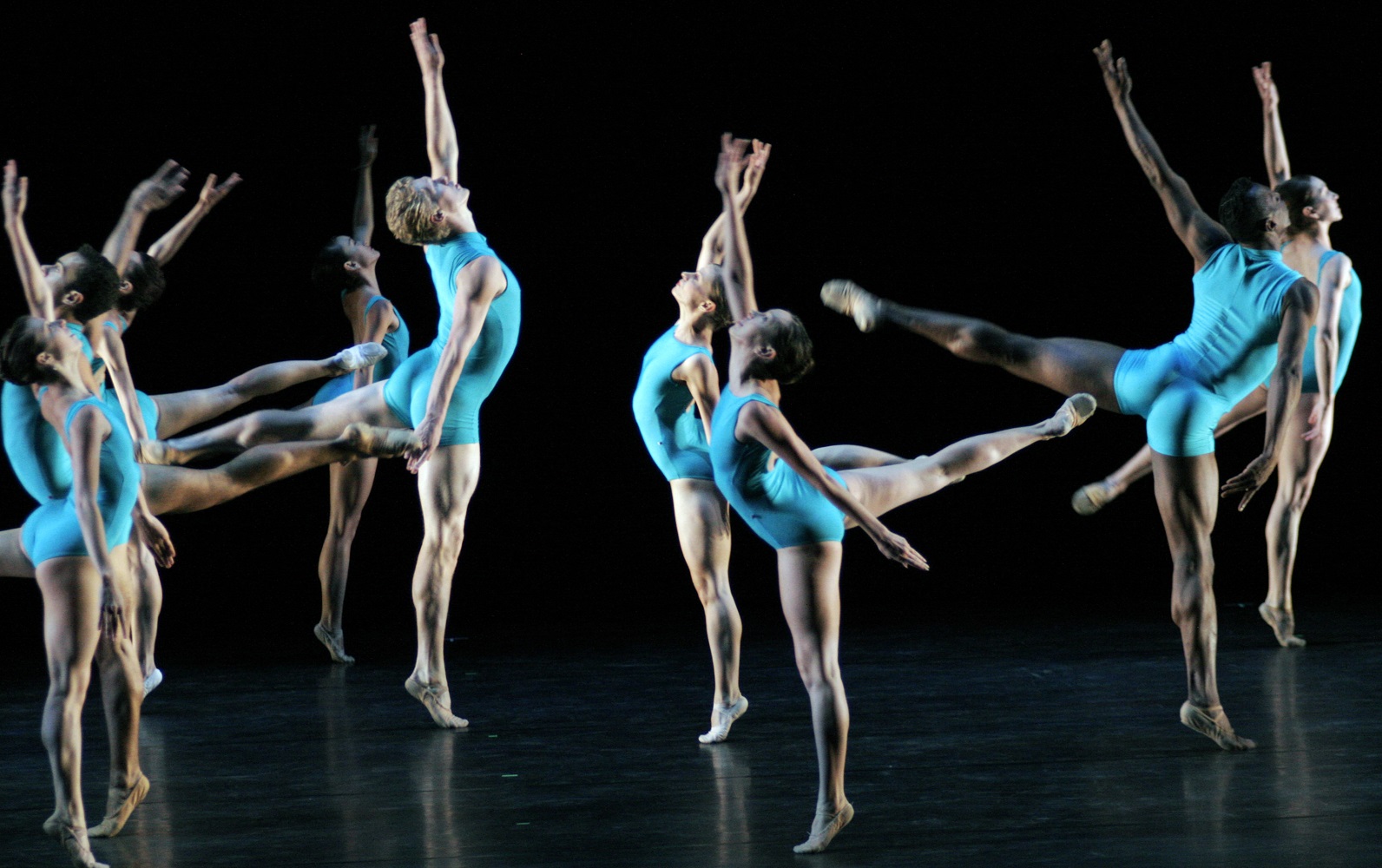
Raiford Rogers Modern Ballet in “Still Life” – Photo: A. Trelease
CHANNEL is a tongue-in-cheek jab at the world of fashion with the dancers dressed simply in unitards. Rogers takes a stab at satire, but due of the dancers’ detachment, it only draws a mummer of snickers from the audience. The music by Amon Tobin adds to the light humor, but it is not enough to push the dance to its desired objective.
Joshua Tree Symphony was the second collaboration between Rogers and composer Mateju. It was inspired by a trip to Joshua Tree, California by Mateju, and according to an interview with Rogers by author Laura Bleiberg, “the intent of Joshua Tree is to visualize the imaginative idea of the score without superimposing an artificial narrative.” Again, the movement is stark and detached; almost totally removed from any performance connection to the audience. In this respect, Rogers is in good company; the Merce Cunningham Company dancers were frequently accused of projecting this same quality.
Joshua Tree Symphony shared a similar repetitive structure or format with Still Life. A dancer always ended center stage to refocus attention that followed organized chaos. What was striking was how Rogers managed to make eleven dancers appear to have doubled in number. He did so by creating a whirlwind of bodies that resembled snowflakes in a wind storm.
The backdrop for Joshua Tree Symphony is extraordinary. It too is a slow changing projection by Michael Nava. This time, however, it the artwork was in rich autumn colors, and had a three-dimensional quality. This, along with John A. Garofalo’s brilliant lighting, the deep red leotards moving in front of Nava’s brown, gold and rust colored paintings, the commanding performances of this very gifted cast, and Mateju’s dynamic sore; Joshua Tree Symphony was a very satisfying experience.
Both Still Life and Joshua Tree Symphony are excellent works. Seen on the same program, however, exposed the set formula that Rogers used to create them.
The cast of the Raiford Rogers Modern Ballet were beautiful and performed Rogers’ demanding work with great skill. They included Sadie Black, Bobby Briscoe, Joshua Brown, Kate Highstrete, Chelsea Paige Johnston, David Kim, Theresa Knudson, Tigran Sargsyan, Nicole Sievers, Mate Szentes, Elizabeth Walker and Hanna Wilcox. A special mention to Tigran Sargsyan, Bobby Briscoe, Chelsea Paige Johnston and Mate Szentes who stood out above the others.

